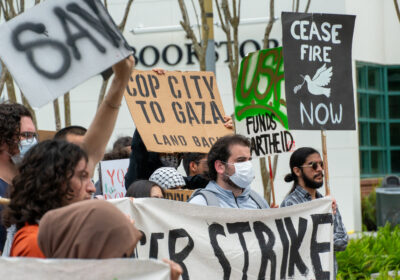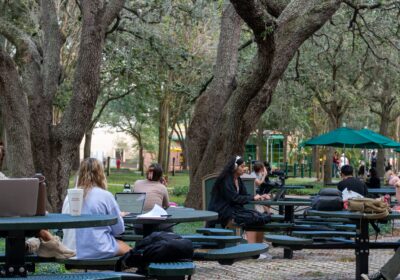US protests force public accountability
In New York City, at least 80 protesters were arrested Saturday outside the New York Stock Exchange. The protesters, part of a movement called Occupy Wall Street, have been there continuously since Sept. 17, according to their website.
This demonstration is only the latest in the wave of popular dissent that has found its voice in the U.S. in the past year; protests of a scale not seen since the 1960s are happening across America. The American people are using their voices to promote corporate and government accountability.
Occupy Wall Street began with 1,500 protesters before dwindling to about 200 protesters, according to the International Economic Times.
The group was there protesting the “greed and corruption of the 1 percent” according to their website, and planned to “set up beds, kitchens, peaceful barricades and occupy Wall Street for a few months.” The 1 percent here refers to the richest 1 percent of the population.
The group claims to take inspiration from the “Arab Spring” movement. “Like our brothers and sisters in Egypt, Greece, Spain, and Iceland, we plan to use the revolutionary Arab Spring tactic of mass occupation to restore democracy in America. We also encourage the use of nonviolence to achieve our ends and maximize the safety of all participants.”
Has the Arab Spring spirit spread to the U.S.? These protests come on the heels of widespread union protests in the Midwest regarding collective bargaining rights, as well as tea party protests demanding fiscal, budget and entitlement reform.
Grassroots politics have fired up in the past year since the mid-term elections of 2010 and the Arab Spring began in December 2010.
Protesters occupied the Wisconsin state capitol in February and shocked America with their scale and bravado. According to Reuters, 85,000 to 100,000 protesters demonstrated, making it the largest ever in Madison – including those during the Vietnam War.
The tea party protest movements have also had widespread participation. The Tea Party’s Taxpayer March on Washington in September 2009 had an attendance numbering in the tens of thousands, according to the Wall Street Journal.
This demonstration was a prelude to tea party-backed Republicans winning back the House of Representatives in the 2010 midterm elections.
This new wave of protests resembles the 1960s in scale and frequency. If there continues to be economic uncertainty and high unemployment, then the protests will continue to grow in size and intensity.
The spirit of these protests will be very different from the 1960s. While the focus then was anti-war, the current focus of demonstrations is less about war abroad and more about greed and broken promises at home.
The protesters in New York, Wisconsin and Washington are all protesting corruption, deal breaking and excess. The theme is common to them all – establish government and corporate accountability.






